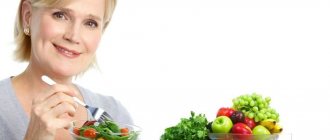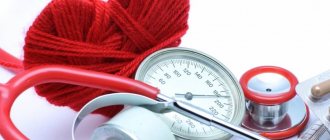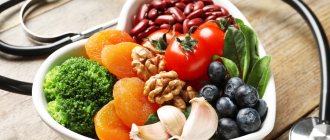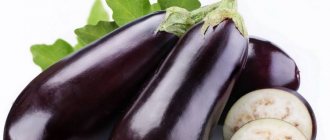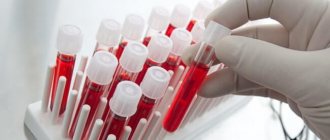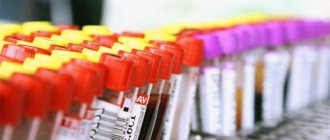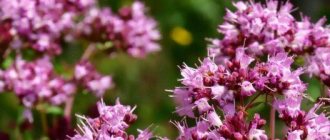08.07.2019 00:00
20886
Hypotension, as many believe, is not as dangerous as hypertension. What problems can occur with low blood pressure? In fact, such a violation is a signal that the body is not functioning normally, not receiving enough oxygen and nutrients.
Hypotension, as many believe, is not as dangerous as hypertension. What problems can occur with low blood pressure? In fact, such a violation is a signal that the body is not functioning normally, not receiving enough oxygen and nutrients. This may also indicate fragility of blood vessels and loss of elasticity. Hypotension manifests itself in the form of dizziness and sometimes loss of consciousness, ringing in the ears, fatigue, tiredness, nausea, and impaired concentration. With such symptoms, you should definitely consult a doctor as soon as possible.
When diagnosing hypotension, the doctor prescribes drug treatment, which can be supplemented with “folk” remedies, increasing efficiency. The easiest way is to introduce foods that increase blood pressure into your diet, in particular fruits. Some of them will not only satisfy the need for sweets, but also help get rid of (or at least minimize) the consequences of hypotension.
Products that lower blood pressure
The dynamic 21st century with constant stress and fast pace of life has brought many diseases to people. High blood pressure has become one of the common diseases of our century. It bothers almost every person to one degree or another. To help your body be healthy and your blood pressure to be normal, you need to eat right.
This article will talk about foods that help lower blood pressure. Of course, in difficult cases they will not replace medications, but they still bring considerable benefits to the body and are an effective means of lowering blood pressure.
What foods lower blood pressure:
1. First of all, it is necessary to note foods that contain a lot of calcium. This element is extremely effective in combating high blood pressure. In this category, skim milk and other low-fat dairy products are the healthiest. You can also eat foods that contain a certain amount of fat, but do it correctly. For example, always eat cheese with foods of plant origin, and sour cream or cream in salads. Almonds, almost all green vegetables and sardines also contain a lot of calcium;
2. An excellent answer to the question of which foods lower human blood pressure would be apples and grapefruits, so to feel good, drink plenty of grapefruit and apple juice. They contain large amounts of magnesium, which is the main enemy of hypertension. Sufficient amounts of magnesium to lower blood pressure are also found in cereals;
3. Foods that lower blood pressure should also contain potassium. In this category, pay close attention to bananas and oranges, watermelons, baked potatoes, tomatoes and tuna, dried apricots;
4. Garlic is considered the most effective product that fights high blood pressure very successfully. For hypertension, even a doctor will recommend eating at least two cloves of garlic every day;
5. Traditional medicine recommends eating chokeberry for hypertension. You need to eat at least 200 grams of this berry per day. You can add it to green tea, mix it with honey, add citrus fruits or rose hips. These products not only give rowan an unusual taste, but themselves work to lower blood pressure. They contain vitamin C, which is necessary for the heart muscle;
6. Grapes and plums, cranberries, lingonberries, viburnum and hawthorn, peaches and apricots. Prepare delicious fruit desserts and fight high blood pressure;
7. Broccoli. It is not recommended to cook this type of cabbage for a long time. It will be ready after just a few minutes in boiling water;
8. Fresh dandelion leaves are an affordable remedy to combat high blood pressure in the summer. Dandelion leaves can be added to salads. You can also find dried dandelion leaves that make an excellent seasoning for salads or soups.
Drinks that will help lower blood pressure
In some cases, a combination of several ingredients that lower blood pressure will be effective. For example, you can brew tea with apple slices, chokeberries and linden blossoms.
Cranberries soaked with sugar in their own juice will also be useful. You can also add two teaspoons per hour, and for greater effectiveness it is recommended to drink this tea three times a day.
You can also make fruit drinks, sauces, desserts and milkshakes with cranberries.
Chokeberry juice or jam, taken just one spoon three times a day, will also help lower blood pressure.
Useful tips
• Foods that lower blood pressure can be eaten in very interesting ways. For example, potatoes boiled in their jackets will help in this matter. It must be eaten with the peel.
• Among the spices, coriander, bay leaf, celery and marjoram will help reduce blood pressure. You can also give preference to parsley or dill.
• As for meat and fish, these products must be eaten boiled, and for cooking, choose low-fat varieties.
• Remember that only hot tea lowers blood pressure, cold tea, on the contrary, increases it.
If you know which foods lower blood pressure, you can try to include them in your diet more often. All products, as can be seen from this article, are very affordable and useful in themselves. Also remember that all of these products reduce blood pressure, but do not cause the side effects that almost every medicine has.
Diet principles
It should be noted that the diet for hypertensive patients is the same for both women and men. Proper nutrition for high blood pressure is the key to health for all people.
In order for your diet to help lower blood pressure, you need to adhere to the basic principles of the diet:
- Meat is available in limited quantities. It’s good if a person eats meat 2-3 times a week.
- You can eat only one yolk per day, but at the same time you can eat about 2-3 egg whites.
- It is necessary to minimize the consumption of sugar, since it is a refined carbohydrate, which can increase blood pressure levels.
- It is advisable that vegetables be present in the diet daily, in an amount of about 400 g.
Nutrition for arterial hypertension should occur on a fractional basis. You need to eat food 5-6 times a day, but in smaller portions than usual. This allows you to reduce the load on the body, in particular on the cardiovascular system. If you adhere to this diet, a person will not gain excess weight, since obese people often have a history of arterial hypertension. Another important aspect of the diet is that dinner should take place no later than 3 hours before bedtime.
For hypertension, it is important not only which foods lower blood pressure, but also how to prepare them. You can use all methods except frying. Boiled, steamed and baked foods are allowed. It is not recommended to frequently eat dishes prepared by stewing.
For arterial hypertension, the diet excludes fried foods, since during the frying process fats release breakdown products. It is these substances that are very harmful to blood vessels, they can even provoke the manifestation of malignant neoplasms.
Salt is a spice that negatively affects blood vessels, and its amount is greatly reduced during a diet for hypertension. It is recommended to consume up to 5 g of salt per day. It is this that causes vasospasm, increases blood volume, and this leads to increased blood pressure. Salt retains fluid in the body.
A cholesterol-lowering diet for patients with hypertension should include the consumption of certain fats. In this case, it’s not even so important how many people consume them, the main question is what kind of fats they are.
All trans fats are strictly excluded from the diet of patients with hypertension. They are found in different foods:
- sausage and frankfurters;
- meat;
- hard cheese;
- ice cream.
Products that lower blood pressure in this case are: fish, olive oil, you can take fish oil separately. The fats contained in these products are very healthy.
Nutrition for high blood pressure should consist of foods that are rich in vitamins and microelements:
- Vitamin C helps strengthen the walls of blood vessels and also has anti-atherosclerotic properties. It should also be noted that it helps strengthen the body's defenses.
- B vitamins also act on vascular walls, relieving their spasm, and protect blood vessels from the formation of atherosclerosis plaques in them.
- Iodine is important for hypertension; the diet for hypertension should include foods high in iodine, as it prevents the progression of atherosclerosis.
- Phosphorus improves the functioning of brain vessels.
- Calcium is able to exert its effect on blood vessels, maintaining them in normal tone.
- Potassium is very important in hypertension because it has a vasomotor effect and is a sodium antagonist.
Potassium is a special microelement for arterial hypertension. Sometimes nutritionists recommend doing potassium fasting days. But it is important that the diet plan for that day is prescribed by a doctor, depending on the degree of pathology. With hypertension and diabetes, it is important to take into account the amount of potassium entering the body and insulin in the blood. If there are no simple carbohydrates in the body, insulin levels will decrease.
Fruits that lower blood pressure
At the same time, various fruits can be used for prevention and treatment. Their effect on high blood pressure occurs by influencing chemical reactions occurring in the body. Changing your diet for hypertension is an integral part of treatment. An important component of diet therapy are fruits, which contain essential microelements and vitamins. These include:
- omega-3 acid;
- vitamin C, E.
- magnesium;
- potassium;
- folic acid.
Regular consumption of polyunsaturated fatty acids (Omega-3) leads to a decrease in lipids in the body. In addition, they have an anti-inflammatory effect, affecting heart cells.
Omega-3 deficiency leads to the deposition of lipids in the lumens of blood vessels in the form of cholesterol plaques. As a result, it gradually narrows, blood flow is disrupted and pressure increases.
The role of magnesium in the regulation of high blood pressure is to maintain its optimal concentration, along with sodium and potassium. If the electrolyte balance is disturbed, then an excess of the latter elements occurs, which is manifested by the appearance of insomnia, cramps in the calf muscles, high blood pressure, fatigue and constipation.
Great importance is also attached to folic acid, which can protect the heart muscle from pressure surges and other factors that lead to stroke or heart attack. Under its influence, with constant use, the deposition of high-density lipids on the vascular walls slows down. As a result, the risk of atherosclerotic plaque formation and the increase in pressure associated with this cause is reduced.
Vitamin C can also normalize blood pressure. It acts as an antioxidant, protecting the vascular wall. It neutralizes bad cholesterol. It can also expand the lumen in blood vessels. Vitamin C, by releasing nitric oxide, increases their permeability. In the presence of an atherosclerotic plaque, the compound can stimulate the formation of collagen. It makes it stronger, which reduces the risk of complications.
Not all fruits can influence blood pressure; some also increase it. It is important to know which fruits lower blood pressure in order to include them in your usual diet. These include:
It is important to take into account certain restrictions that may arise if you have an allergic reaction to a certain product from the list.
This fruit is considered universal; it not only helps cope with hunger, but also reduces high blood pressure. The reason for this is the presence of a large amount of potassium in its composition. Fruits can be used both during a snack and at breakfast. Fresh banana pieces are added to cottage cheese or porridge. In the crushed state, the fruits are frozen and, if necessary, used for their intended purpose. When exposed to low temperatures, beneficial properties are not lost. We should not forget that people with diabetes are prohibited from eating bananas due to the presence of large amounts of carbohydrates.
Fruits to lower blood pressure
What fruits lower blood pressure? Not all of them will be useful for hypertensive patients, although they help stabilize blood pressure. For example, grapes and raisins obtained from them, dates will contribute to weight gain due to their high carbohydrate content. But the bulk of the fruits available in our latitudes will only bring benefits to the patient.
Kiwi
The first representative that helps lower blood pressure is kiwi. Its pulp contains almost all types of vitamins, minerals and long-chain acids. Kiwi fruits promote active breakdown of fat reserves and weight loss, thereby reducing the overall load on the circulatory system and heart muscle. The result is normalization of blood pressure by losing weight and minimizing the risk of thrombosis.
Important! Both the pulp itself and the juice obtained from it will be equally useful for hypertensive patients.
Bananas
Banana pulp contains a large amount of useful substances. First of all, this concerns potassium, a trace element necessary for the normal functioning of the myocardium. In addition, bananas have a strong hypotensive effect, which is good for the heart.
But only fully ripened fruits will be beneficial for the body. They can be added to cocktails, smoothies, cereals, dessert dishes, etc. To fully satisfy a person’s daily requirement for potassium, you need to eat two bananas daily. Bananas, despite their high potassium content, should not cancel out the intake of Panangin or Asparkam prescribed by the doctor.
Persimmon
The properties of persimmon that normalize high blood pressure levels are due to its diuretic effect. A decrease in circulating blood volume provides a hypotensive effect and also helps reduce edema. With daily consumption of persimmon, the walls of the blood vessels are strengthened, the elasticity index increases, which helps to normalize the functioning of the myocardium.
After reaching the age of 50, cardiologists recommend including persimmon in your daily diet. The fruit not only normalizes high blood pressure, but also acts as a preventive measure for the formation of atherosclerosis and diseases of the cardiovascular system.
Tangerines
Tangerines are good for lowering blood pressure. Regular consumption of tangerines promotes smoother blood flow and expansion of the lumen of blood vessels. The result is normalization of blood pressure indicators. Thanks to the dietary fiber, vitamin C, pyrodoxine (B6) and potassium present in the pulp, there is an improvement in the general condition of the circulatory system.
The likelihood of developing ischemic conditions and atherosclerosis is reduced. In addition, the pulp contains a large amount of molybdenum (necessary for strengthening tooth enamel) and other substances necessary for humans.
Plum
Plum contains a large percentage of vitamin P and substances similar in effect to it. The fruit helps to quickly lower blood pressure. An additional effect is strengthening the walls of blood vessels. The coumarins contained in plums prevent the development of thrombosis.
Regular consumption of plums helps:
- cleansing the blood of waste and toxins;
- improvement of digestive processes and intestinal motility;
- removal of “bad” cholesterol and salts.
Diabetics and obese people should avoid plums in any form - fresh or dried. The product is distinguished by its high calorie content.
Pomegranate
Pomegranate contains a high percentage of long-chain organic acids, salts and tannins. The decrease in blood pressure occurs due to the amino acids present and a fairly strong diuretic effect. To reduce and stabilize blood pressure, you need to drink pomegranate juice daily for two to three weeks.
Pomegranate juice helps stabilize blood pressure levels
The drink increases the tone of the walls of blood vessels, resembling in its effects drugs from the group of angiotensin-converting enzyme (ACE) inhibitors. As a result, the lumen of blood vessels expands and blood pressure levels decrease. An equally important result of regular consumption of pomegranate juice is the normalization of coronary circulation. This has a positive effect on the functioning of the entire circulatory system as a whole.
Contraindications:
- all types of gastritis;
- ulcerative pathology;
- gastroesophageal disease.
Important! To prevent the development of heartburn, the juice should be slightly diluted with alkaline mineral water.
Apricots
Apricots contain a lot of potassium, so the fruits will be useful not only for hypertension, but also for other pathologies of the heart and blood vessels. It is recommended to include apricots in the menu - eating 5-6 apricots daily - if the patient has been taking diuretic drugs systemically for a long time (this is especially true for thiazide drugs).
Fresh fruits can be replaced with juice - ½ cup, and in winter - dried apricots (10 - 12 pieces). If you have hypertension, you need to eat as many fresh apricots as possible during the season. The phosphorus, potassium and magnesium present in them help lower blood pressure and stimulate the cognitive functions of the brain.
Coconut
Coconut milk is beneficial for hypertension. It contains magnesium, potassium and calcium. Coconut milk has the ability to normalize blood pressure, so you can drink it with both low and high blood pressure.
Green apples
Fruits provide the body with large amounts of ascorbic acid and vitamin P. They will be very useful for people not only with hypertension, but also with atherosclerosis (active destruction of cholesterol plaques occurs).
Regular consumption of green apples solves the following problems: lowering blood pressure levels, reducing the severity of headaches, eliminating noise in the head, and dizziness. To normalize blood pressure, it is advisable to combine green apples with rice. This will help not only bring blood pressure back to normal, but also get rid of cardiac edema.
Dried fruits
Dried fruits (dried fruits) are also good for lowering blood pressure. This is explained by the high content of potassium in the pulp, which helps improve the functioning of the cardiovascular system.
Dried fruits contain vitamins B1, B6, tocopherol (E), potassium, folic acid, magnesium - they help reduce high blood pressure, expand the lumen of blood vessels, and restore heart rhythm
With regular consumption of dried fruits, cholesterol levels return to normal. The product helps improve the well-being of patients with refractory hypertension, a condition in which it is not possible to normalize blood pressure levels with the help of medications.
List of 15 foods that lower blood pressure in humans
High blood pressure, or hypertension, is a common condition. It is recorded in 35% of the total population. To maintain normal heart function, drug therapy and medical supervision are necessary. To increase the effectiveness of pharmaceutical drugs, traditional medicine is often used.
In this article we will study in detail what products exist that lower blood pressure and normalize the functioning of the cardiovascular system.
What foods lower blood pressure?
Proper, balanced nutrition, excluding the intake of harmful foods, is very important for hypertensive patients. The diet should include ingredients enriched with beneficial vitamins and minerals.
What to eat if you have hypertension should be advised by your doctor. To enhance the effect of medications, doctors recommend including healthy foods that lower blood pressure in your diet.
Beets contain large amounts of magnesium. This element promotes the expansion of vascular walls, relieves spasms and has a diuretic effect.
In addition, beets remove dangerous waste and toxins from the body and prevent the formation of blood clots. People suffering from hypertension are advised to include this vegetable in their diet.
The most common folk remedy is beet juice:
- the juice is squeezed out using a juicer or grater, on which the beets are crushed, and then squeezed into a deep container or glass with your own hands;
- It is also recommended to add carrot juice in a 1:1 ratio;
- consume before meals 3-4 times a day.
Pomegranate fruits are rich in potassium and vitamins A, E, C, B1, B2. Periodically consuming pomegranate in its pure form or as juice can improve the condition of the nervous system, strengthen vascular walls and prevent the appearance of atherosclerotic plaques.
For high blood pressure, drink half a glass of freshly squeezed juice 2 times a day 30 minutes before meals. You can also eat half a pomegranate twice a day.
Celery is rich in oxalic, acetic, glutamic acids, as well as vitamins A, B, C, PP, E, K and group B. These elements are very useful for humans and ensure the normal functioning of all vital systems.
When consuming celery, blood vessels are strengthened, the functioning of the heart and kidneys is stabilized, metabolic processes are normalized and blood circulation is improved.
In addition to using celery as a component of various dishes and dressings, doctors recommend preparing decoctions from it:
- thoroughly wash the top of the vegetable;
- pour 400-500 ml. water;
- put on low heat and bring to a boil;
- boil for 30-40 minutes.
You need to take a decoction of celery 1-2 times a day an hour before meals.
Hypertensive patients are strongly advised to periodically consume the seeds, leaves, roots and stalks of celery. Due to its taste, this vegetable is often used in the kitchen as a seasoning, salad dressing or ingredient in main dishes.
Hibiscus and green tea have an effective blood pressure-lowering effect. By consuming them regularly, you can prevent blood clots, improve the flexibility and strength of blood vessels and reduce cholesterol levels.
It is recommended to drink teas daily, 1-3 times a day. If you brew the drink correctly, the positive effect on the body will be noticeable after 2-3 days.
To combat a hypertensive attack, you need to drink weakly brewed tea. A strong drink is used for hypotension.
Cocoa contains useful components - flavonoids, which help expand the lumen of blood vessels and lower blood pressure. In addition, cocoa powder normalizes the functioning of the nervous system and has a sedative effect on the body. Thanks to this effect, blood pressure levels also decrease.
Cocoa must be taken raw as a dietary supplement. It is then that it has a beneficial effect on the patient’s body.
Milk contains useful components: calcium, potassium and magnesium. It is these elements that have a positive effect on the functioning of the cardiovascular system:
- strengthen and expand vascular walls;
- normalize blood condition;
- remove cholesterol from the body;
- prevent the formation of blood clots.
Doctors recommend drinking at least a glass of cow's milk every day. The temperature of the drink should be room temperature or slightly warm, since too cold or hot milk can adversely affect the patient’s well-being.
Table No. 10
There is a special diet for hypertension and atherosclerosis - table No. 10. Its main criteria are avoidance of salt consumption, and you should also drink no more than 1.2 liters of liquid per day. Another mandatory measure of the tenth diet is reducing the calorie content of food. For hypertension, eating according to these rules will help saturate the body with essential microelements. These substances help normalize fat metabolism, so that they are not deposited in the liver and blood vessels.
That is why diet therapy involves eating foods that are quickly digested and prepared only by baking, boiling or steaming. Proper nutrition for hypertension should contain a certain amount of calories. The calorie content of food eaten should not exceed 2500 kcal. in a day. It is better to cancel salt or reduce it to 4 g per day.
The exact scheme of the daily menu should include about 70 g of fat (20% of which comes from vegetable fats), carbohydrates should be about 400 g, and proteins should be 90 g (no more than 50% of which should be of animal origin). For hypertension, a diet according to these rules is necessary, as it will prevent the development of atherosclerosis.
It should be noted that you should not eat if you have hypertension:
- Fresh baked goods. A diet for arterial hypertension involves eating stale, slightly dried bread, which is made from flour with bran.
- Baked goods and puff pastry are prohibited, as these products contain sugar and margarine, which are contraindicated for hypertension and atherosclerosis.
- Duck and goose meat, offal.
- Fatty dairy products, salty cheese.
Added to the list of what you cannot eat are sauerkraut, salted and pickled vegetables, raw onions and garlic, radishes, mushrooms, spinach, and sorrel. You can't eat lard either.
The high blood pressure diet suggests that the meat should first be boiled in one water, which should be drained after the meat has boiled. Next, it is boiled in new water, and only after that the dish can be eaten. Meats allowed include turkey, chicken, veal, beef, and rabbit.
Diet for arterial hypertension No. 10 allows pasta from durum wheat and cereals. Only their preparation must be correct - cook with water or milk, without adding salt and sugar. This diet for stage 2 hypertension is also effective, and medical practice proves this.
Differences for women and men
In men and women, the list of foods that lower blood pressure is practically no different. The only thing that is not recommended for men to abuse is milk. It contains animal hormones that provoke accelerated cell division.
If such a process was absolutely safe in childhood, then in adulthood it was not. With accelerated cell division, the functioning of the male genitourinary system deteriorates, potency suffers, and benign or malignant tumors begin to form.
Why is hypertension dangerous?
The blood supply system plays an important role in delivering oxygen and nutrients to all organs and tissues of the human body. The movement of blood in the vessels occurs through the creation of blood pressure. The regulation of blood pressure in the body is ensured by the nervous and endocrine systems. Various stimuli (hormonal, nervous) can cause the heart to contract more often, and the heart will increase the release of blood - the speed of blood flow and blood pressure will increase.
Pressure regulation occurs with the help of the vessels themselves. The artery branches into arterioles, from which small capillaries arise. Nerve impulses or hormonal releases cause relaxation of the walls of blood vessels and dilation of arterioles. Increasing the lumen for blood flow leads to a decrease in blood pressure.
High blood pressure, which is maintained above 140/80 over time, leads to the development of hypertension, arterial hypertension. Hypertension is a dangerous disease. It can cause:
Persistent high blood pressure can cause the development of other diseases:
- Kidney and heart failure.
- Atherosclerosis. The disease promotes the formation of atherosclerotic plaques in blood vessels.
- Deterioration of vision.
You can reduce your blood pressure after identifying the cause of the disease and eliminating it. Hypertension can be an independent disease or a consequence of a disruption in normal functioning:
- kidney;
- nervous system;
- endocrine system;
- changes in blood vessels - the formation of sclerotic plaques and expansion of the aorta.
Medicine cannot yet explain it, but pregnancy often causes hypertension. Stabilization of the patient's condition is achieved by eliminating risk factors that contribute to the development of the disease. These include:
- sedentary lifestyle;
- obesity;
- smoking;
- alcoholism;
- heredity;
- stress;
- increased salt intake.
Effect of fruits
A diet rich in fruits and vegetables has a beneficial effect on the body's systems. It normalizes blood pressure. As a result of numerous studies, it was possible to find out that fruits can actually help reduce dangerous parameters.
It has been experimentally proven that a large proportion of fruit in the diet in some cases gives no less effect than synthetic drugs. Over the course of eleven weeks, more than four hundred subjects (who suffered from high blood pressure) ate four or five servings of fruit every day. The diet was also supplemented with vegetables and a small amount of fat, and preference was also given to whole grain products.
The result of this diet was a decrease in indicators by an average of ten units after just two weeks. According to the authors of the study, medications prescribed for mild hypertension have a similar effect. The question arises: why, in this case, stuff the body with chemicals if it itself is able to cope with the disease with a proper diet rich in fruits that help lower blood pressure levels.
Switching to a diet containing a minimum amount of fat and a maximum amount of fruit can reduce the likelihood of coronary heart disease by 15% and stroke by 27%.
A monitoring study of the eating habits of about 42,000 nurses showed that women who consume more fruits and vegetables are less likely than others to suffer from elevated blood pressure parameters.
Among the healthiest fruits: prunes, apples, oranges. Many researchers have recognized the fact that vegetarians have lower blood pressure levels than meat eaters. Switching to a vegetarian diet can really help lower your blood pressure. But you don’t have to completely exclude your favorite foods. Arrange fasting days. The positive effect is achieved rather due to the fact that you start eating fruits, which lower blood pressure, rather than by refusing to eat meat; its consumption (especially lean meat) does not significantly affect the indicators.
Why are fruits so effective, and which ones are best to eat to lower blood pressure? One of the possible participants in normalizing blood pressure with the help of fruits may be fiber. In older men who consume little fruit, hypertension appears 46% more often than in those who consume as much “fruit” fiber per day as five apples contain. It has not been established exactly why the fiber contained in fruits is more effective in the fight against high blood pressure than the fiber found in cereals and vegetables. This means that fruits rich in fiber have lowering properties.
Another possible explanation for the effectiveness of fruit consumption is the presence of antioxidants in them, which indirectly increase the amount of a hormone-like substance in the blood - prostacyclin, which dilates the vessels through which the blood moves, reducing blood pressure. It is also possible that this action is performed by vitamin C, which many fruits are rich in.
- sweet varieties of pomegranates increase and sour varieties decrease blood pressure;
- Fatty, salty, spicy foods increase blood pressure.
What substances have lowering properties? For hypertensive patients, the most beneficial are fruits that are rich in magnesium, antioxidants, potassium, acids and fiber. These include: apricots, peaches, apples, lemons, viburnum, grapefruits, bananas. Strawberries, currants (especially black), cranberries, lingonberries, blueberries (for the winter they can be frozen or dried, brewed and drunk as tea) have a positive effect on the body of hypertensive patients. Aronia (chokeberry) is believed to effectively lower blood pressure. The fruits can be eaten fresh, squeezed into juice or made into jam (however, be careful with sugar consumption).
They are a universal remedy that normalizes blood pressure and helps the heart function. Their action is “two-way”; they can increase very low pressure and lower excessively high pressure, bringing it closer to normal. Bananas are rich in potassium! What's the best snack you can come up with during the day?
Green fruit contains magnesium, potassium, vitamin C. This is what is necessary for normal blood pressure levels. It also removes excess sodium and improves immunity.
They are able to reduce blood pressure due to a powerful diuretic effect. Keep in mind that if fluid is retained in the body, problems with blood pressure cannot be avoided. Don't drink a lot of fluids late at night.
What other fruits should I add to my diet? Melon, gooseberries, plums, sea buckthorn are indicated for hypertensive patients. Even one apple eaten a day can help reduce the risk of stroke.
Five foods that increase blood pressure
In summer, due to the heat, many people suffer from surges in blood pressure. What foods, in addition to the well-known coffee, should not be eaten if you are prone to high blood pressure and, conversely, which will improve the well-being of hypotensive patients, said Tatyana Ivanova, head of the advisory department of the consultative and diagnostic center No. 6 of the Department of Health, which is located in the Eastern Degunino district.
Tatyana Ivanova, photo from personal archive
Basically, these are products that should not be abused even by healthy people, but there are also those that fit well into the principles of proper nutrition.
Pickles
Pickled cucumbers, mushrooms, tomatoes, sauerkraut are favorite snacks in our country, but it should be remembered that due to excess salt they retain fluid in the body, and this is a direct path to increased blood pressure. Therefore, doctors recommend that hypertensive patients reduce the amount of pickles to a minimum.
Photo: Pixabay.com
— People with a tendency to high blood pressure should not consume more than a teaspoon of salt per day. This dosage is contained in 300 grams of pickled cucumbers - that’s two to four pieces, depending on the size, says Tatyana Ivanova. — If lightly salted food seems bland to you, add seasonings and herbs to improve the taste. Or use reduced sodium salt.
Cinnamon and spices
Photo: Pixabay.com
In moderation, cinnamon and other hot spices - turmeric and curry (a seasoning based on it), black and red pepper - help improve appetite and metabolism, and tone up. But due to the natural pungency of spices, they cause thirst, a person drinks more, which leads to an increase in the volume of circulating blood, which can cause blood pressure to increase.
Fat meat
Photo: Pixabay.com
Fats (lipids) cause disruption of normal blood flow and are deposited on the walls of blood vessels, narrowing them. This increases the risk of hypertension.
Therefore, meats such as lamb and pork should be eaten in very moderate quantities. A lot of fat and harmful cholesterol are found in meat by-products - liver, kidneys, brains, not to mention processed products - sausages and sausages. Also, doctors categorically do not advise buying street fast food, which, as a rule, contains a large amount of fat.
— Grilled chicken bought at a street kiosk is cooked on a spit, which accumulates a huge amount of fat and carcinogens, so you should avoid eating it. If you can’t restrain yourself, at least remove the skin from the meat; this is where most of the harmful substances accumulate, advises the doctor.
Canned food
Photo: Pixabay.com
Manufacturers add large amounts of salt and many preservatives to canned and processed foods to help them last longer.
— Canned fish contains the most salt; one can can contain a daily dose. Therefore, if you are preparing a salad, it is better not to add additional salt to it. There is also a lot of salt in semi-finished products: dumplings, dumplings, fish sticks, pizza, warns the doctor.
Sweets and baked goods
Photo: Pixabay.com
“It is worth limiting the consumption of baked goods, white bread, confectionery with a lot of sugar - chocolate with additives and sweets,” says the doctor.
If high levels of sugar remain in the blood for a long time, this causes disruption of all types of metabolism - carbohydrate, fat and protein. The blood vessels are destroyed, resulting in increased blood pressure.
“If you have an unbearable craving for sweets, it’s better to eat a few shares of dark chocolate or a teaspoon of honey,” the doctor advises.

